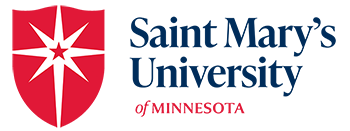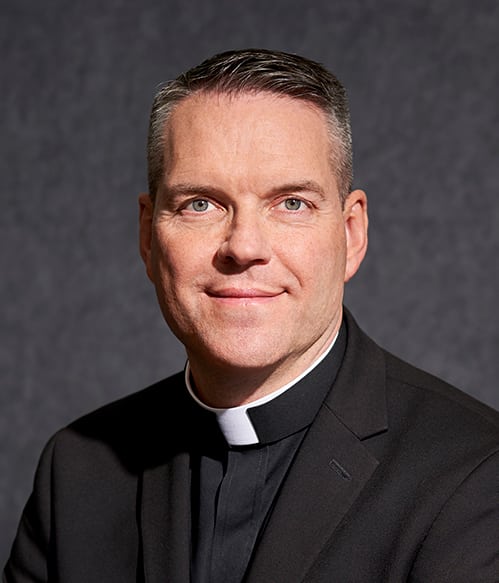Saint Mary's Newsroom
Campus ConnectionAn update from the president to alumni and parents
Mental health resources for SGPP students
2020-21 has been a challenging year for students in many ways. As you may know, Saint Mary’s University offers health services to our traditional students in Winona, but does not offer health services to students in our Schools of Graduate and Professional Programs (SGPP).
If you are working with SGPP students who need or have asked for help with resources for mental health, the following may be helpful in connecting students with mental health services in the Minneapolis area.
City of Minneapolis mental health resources
Minnesota Department of Human Services (resources related to the COVID-19 pandemic)
National Alliance on Mental Illness – Minnesota
Taylor Richmond Benefit Dance donates to A-T Children’s Project
The 21st annual Taylor Richmond Benefit silent auction and dance raised $2,450, which was donated to the A-T Children’s Project in memory of the late Taylor Richmond.
Taylor, the son of former Saint Mary’s staff member Nikki Richmond, was born with ataxia-telangiectasia (A-T), a degenerative genetic disease that severely limits movement, depresses the immune system, and leads to a host of debilitating symptoms. A-T Children’s Project works to fund international research in an effort to find life-improving therapies and a cure for ataxia-telangiectasia.
The Taylor Richmond Benefit Dance committee would like to thank everyone who participated in the silent auction and dance to make this year’s donation possible.

Lifting lives one car at a time
Cathy Heying M’01 had never even changed a tire before. As a pastoral minister, she was equipped with an entirely different set of tools.
She could have never predicted that one day she’d be changing struts, replacing a timing belt, and balancing a set of tires.
But the Holy Spirit, she believes, had other plans.
Heying attended Saint Mary’s as an undergraduate for two years from 1988-1990 and then came back to get her master’s in pastoral ministry in 2001. While working at Saint Stephen’s Catholic Church in Minneapolis, she spoke with guests staying at a shelter for people experiencing homelessness.
She soon discovered that having a safe and reliable vehicle was a key factor in changing people’s lives.
“It’s like a Jenga game for them,” she said. “They’re barely hanging on and precariously put together and if one peg is pulled, their entire world collapses. Not having a reliable car leads to greater suffering and poverty. Often, there were jobs, but it meant a two and a half hour bus ride, and their jobs started at 6 a.m., so they’d be trying to get out the door at 3 a.m. to catch a bus to start their manufacturing job. It never lasted long because it’s an impossible schedule to keep. A working car could mean the likelihood of moving more permanently out of their current situation.”
Other times, she said, their cars served as their homes.
“It became so clear to me that a working vehicle could make all the difference,” Heying said. And, although she uncovered some part-time, low-cost car care alternatives in Minnesota, most were still not affordable to low-income people.
Reluctantly, Heying went back to school to study automotive repair. “I was still paying off grad student loans and was quite content with my life,” she said. “I didn’t know much about cars, and I did not have a natural ability. I thought, ‘I’ll just try it.’ One step at a time, and I thought almost immediately, ‘What in the heck have I done?’ Here I am 38 years old with a room full of 18- to 20-year-old men. The few women in the program dropped out before the first quarter. Honestly, if I had not been 38 and beyond caring, I would have probably quit, too.”
Heying said the program was run like a boot camp. “And I had been in the Pastoral Ministry program at Saint Mary’s where we’re all about the love,” she said with a laugh. “I thought, ‘I’ve got a master’s degree, how hard could tech school be?’ It totally kicked my butt. My brain was designed for people and ministry and social work — not math and science and electronics.”
In 2013, Heying founded The Lift Garage in Minneapolis, an affordable, nonprofit auto repair service for all Minnesotans that meet the 150% Federal Poverty Guideline. They charge only $15 per hour, plus the cost of parts at no mark-up. The website calls The Lift “A vehicle for repairing lives. Changing the world one car at a time.”
Even the name of the garage, she said, was inspired by a greater power. “We use lifts in the garage, and we were going to try to lift people’s lives,” she said. “It was an instant fit.”
In the beginning, she sublet one bay one day a week. But, with a little divine intervention, her work sparked the attention of the CBS Evening News, which shared her story nationally — and gave The Lift a lift.
“Money started pouring in and so did customers,” she said. “We kept adding staff and adding space and learning as we went. Now we own the building we are in; we have five bays, a staff of 12, and we’re open five days a week.”
Since 2013, they’ve served 1,400 customers, made 3,000 repairs, and saved customers $1.1 million.
And she’s been interviewed countless times, by everyone from the Washington Post to CNN. She’s also done her own TedTalk.
“I don’t find myself nearly that compelling, but it’s good for the organization,” she said.
 With all its growth, demand for The Lift’s services has always exceeded capacity. Hundreds of people are waiting for appointments. And while they fix 125 cars a month on average, they are booked months in advance.
With all its growth, demand for The Lift’s services has always exceeded capacity. Hundreds of people are waiting for appointments. And while they fix 125 cars a month on average, they are booked months in advance.
“We’re intentionally inefficient,” she said. “We could get them through faster, but we’re not willing to compromise our core values. It matters to us that every car gets a full inspection. We help people prioritize and make the best decisions they can. We try to meet people where they’re at, and people in poverty are often in crisis for various reasons. Sometimes the crisis causes poverty or vice versa. They bring a lot of those needs to us. We are social workers, grief counselors, and pastoral ministers who fix cars on the side.”
It’s a job that can be incredibly rewarding … particularly when they lose customers.
Heying recalls one client who brought in a donated car to be serviced. As a result, she was able to get a higher-paid position as a case worker who could make client visits. “She was otherwise qualified but didn’t have a car,” Heying said. “She got this job and made too much money to qualify for our services. I can still see the day she stopped by to tell us that. She said, ’Hopefully I’ll never see you again.’ Those are usually not words you want to hear, but in this case, those are exactly the words we want to hear.”
Heying admits that many days she leaves work crying, often because of the situations people are in, and sometimes because of the way she and her colleagues have been treated. “Having insight into their pain can be more than impossible to bear,” she said. “But it’s good work and it’s holy work. Jesus might not have envisioned the work of the Holy Spirit in fuel injectors or oil changes, but there He is, alive and well. The whole thing was led by something bigger than me from the very beginning.”
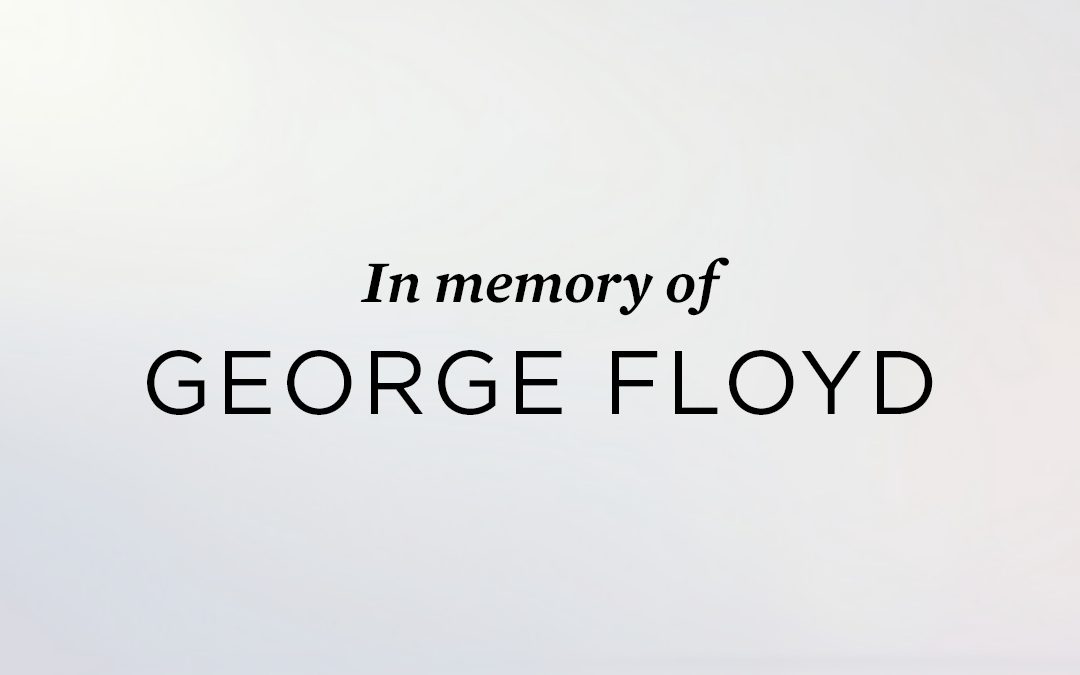
An invitation to silent reflection in memory of George Floyd
Minnesota Governor Tim Walz has issued a proclamation asking Minnesotans for a moment of silence at 1 p.m. on Tuesday, May 25, 2021, for 9 minutes and 29 seconds to honor George Floyd on the one year anniversary of his death. In keeping with this proclamation, we invite the Saint Mary’s community to join in silence, reflection, and prayer at this time, recognizing the need for ongoing work to eliminate all forms of racism and keeping in mind all who suffer from injustice — especially the lives lost through violence.
To the upright I will show the saving power of God.
— Psalm 50:23
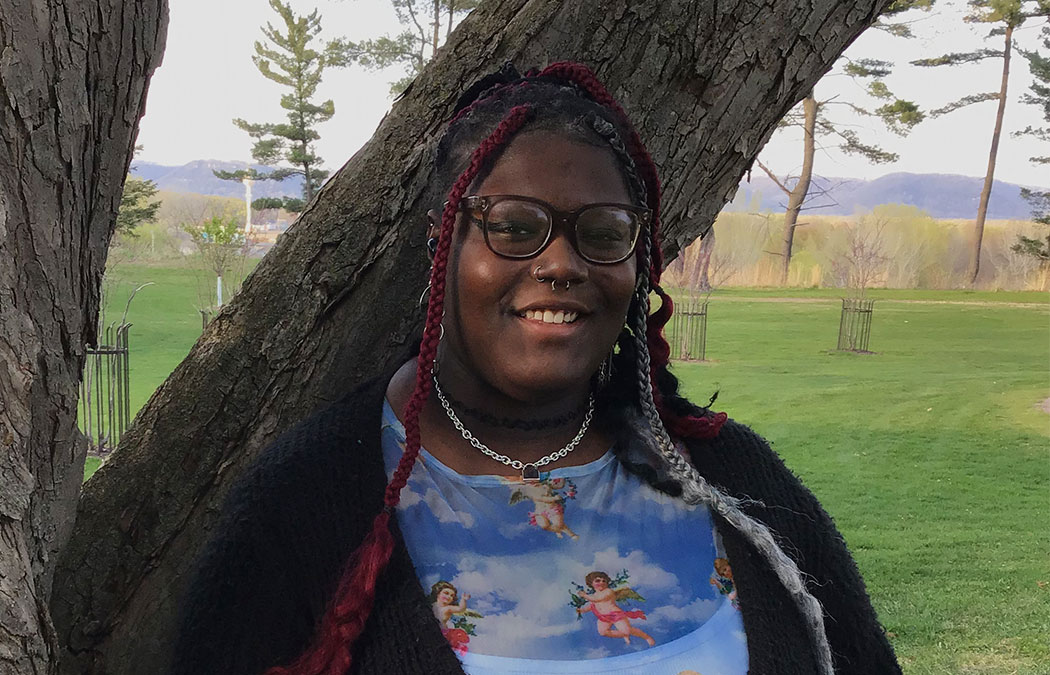
First Generation Initiative student spotlight: Destiny Walker B’22
By Krista Joy Coleman
Criminal justice and psychology double major Destiny Walker hopes to make an impact as a community changer and is well on her way. Walker is already very familiar with being a proponent of change in an evolving community. She is heavily involved in the leadership teams of multiple clubs at Saint Mary’s University, including the Merging Intercultural Experiences (MIX) Club and Solidarity Club (to name a few).
Walker participated in Countdown to College (C2C), an immersive academic program on Saint Mary’s Winona Campus to help prepare high schoolers for college life and classes. Her favorite thing about C2C was learning firsthand what to expect in college. “I’m introverted, so stepping into a new environment and getting used to it before starting college was great,” she said.
Throughout the C2C summer program, high schoolers spend time on campus, take classes, and meet other students for two weeks every summer for four years. Students also have the opportunity to receive college credit through the C2C program, something Walker received.
With these credits, as well as credits from Post Secondary Enrollment programs and other advanced courses, Walker graduated early from Washington Technology Magnet High School in the Twin Cities and had a jump start on her college career. She has ambitiously chosen to pursue a double major and will graduate from Saint Mary’s in four years.The junior said she is happy her time on campus with her friends and clubs won’t be cut short.
Walker believes in working hard to achieve goals. However, when offered the First Generation Initiative (FGI) scholarship, she felt uniquely rewarded and recognized for her hard work. “It’s so great to have someone tell me what I do is important and that I need to give myself some credit for the hard work I do,” she said.
Walker has a special appreciation for Winona. She loves walking around town and discovering the local businesses. Drawn to creative environments, she often stops by Jovy Rockey Jewelry Shop, Art & Sõl, and JimmyJams Comic Bookstore to see local art and support creatives in the area.
When she’s not working with one of the clubs on campus or discovering Winona, Walker is diligently working on her coursework. Walker said she feels encouraged by many people at Saint Mary’s and lists Miles Dunna from admissions, Octavia Brown, and Alisa Macksey from the FGI program, and Erin Mae Clark, Ph.D., from the English Department.
“Having people to talk about social justice issues with on campus is so important,” Walker said. “Most of my community is within the FGI program. I really like the people, and they created a family for me when I first got here.”
As the eldest in her family, Walker represents a world of opportunities to her two younger sisters. She hopes succeeding at college shows her sisters they can do anything they set their minds to. “Everyone has different choices they can make. I want to show them that they can go to college if they want to,” she said.
Walker said she always wanted to go to college and was thankful to have the opportunity. She looks forward to a career working with juveniles re-entering society, helping them post juvenile detention to process their past and rejoin their communities. She feels many programs for juveniles have a one-size-fits-all approach that doesn’t account for cultural background, personal individuality, and family history. It’s her dream to be a part of a program that takes these details into account so she can help young people on individual levels to thrive in the future.
Walker said she is so thankful to FGI benefactors who make everything she loves about the FGI program and C2C possible through their generosity. She’ll continue to pay it forward in a meaningful and life-changing career of helping young people.

Baseball alumni prove giving is contagious
It’s been scientifically proven that seeing others give makes an individual more likely to give.
Generosity is contagious, and head Saint Mary’s baseball coach Nick Winecke ’07, M’12 can attest to the fact because he’s seen it in action. Benefactors spanning more than five decades are giving back to a sport and a program they love.
It all began on Jan. 14, 2019, as Saint Mary’s unveiled its new $704,000 baseball clubhouse, “Pudge’s Place.” The 2,500-square-foot facility was made possible by a generous lead gift from Marc Weisenburger ’75.
Weisenburger had been inspired by previous benefactors of Saint Mary’s initiatives like the Science and Learning Center and the Kabara Institute.
“In thinking about how I could help define success for Saint Mary’s baseball, I wanted to try and determine what I could do to make a difference,” he said. “I am honored that my nickname is on this clubhouse, and I am proud to be forever connected to Saint Mary’s baseball … and all that it stands for.”
Winecke said that Weisenburger’s generosity inspired a giving trend for the baseball program. Of the 46 lockers located in Pudge’s Place, all (plus two coaches’ lockers) were quickly sponsored. The cost to sponsor a locker was set at $2,000, but several alumni, Winecke said, have made gifts over the requested sponsorship amount.
In total, 66 individuals and families supported the project.
Even more impressive, about 50 percent of the lockers were supported by young alumni from the past 13 years — alumni like Taylor Thelemann ’14, who played shortstop for the Cardinals between 2011 and 2014.
“I decided to sponsor a locker and give back to the program in general because of how much the team and university did for me as a person,” Thelemann said. “I matured and developed more than I could have ever expected, and I attribute a lot of that to the inclusivity and camaraderie associated with the program. The culture that Coach Winecke has built at Saint Mary’s is truly special, and I wanted to help make that bond more noticeable to prospective students.”
Thelemann said having his name permanently attached to the facilities is an honor.
“Alumni banded together collectively to make the opportunity a reality,” he said. “My former teammates who were contacted agreed to assist without hesitation.”
As great as the on-field accomplishments were, Thelemann said it’s the time spent off the field with teammates he misses the most. “Coach Winecke always said that the first day you come on campus as a new student and member of the baseball program, you gain 40-plus best friends, and that could not be more true. It is hard to find a professional environment where everyone cares more about the common goal than individual accomplishments or milestones.”
Weisenburger shared this same experience while playing under the guidance of Hall of Fame Coach Max Molock between 1971 and 1975. To further honor Molock, Weisenburger has now committed generous funding for another important Cardinal baseball initiative.
This generous donation has established “The Max” player package. “The name, in addition to being inspired by Molock, is also centered around the knowledge that giving the max effort and having the max contributors will lead to max results,” Weisenburger said.
As part of the package, all Cardinal baseball players every year will receive a pair of spikes, training shoes, and practice gear (two T-shirts and a pair of shorts). Moving forward, first-years will get a certain package every year, and returning players will be able to choose from a menu of options, based on their need.
“He’s allowing us to have a Division 1 experience at a Division III institution,” Winecke said. “This sets us apart to win with recruitment, but it also takes the financial burden off of some students and their families.”
Sophomore biology pre-med major Brandon Merfeld said it took awhile for the news of this gift to sink in.
“Playing Division III sports, it is really unheard of to get all that equipment for free,” he said. “It really speaks to the quality of alumni that this program produces. It also displays that there is a high level of investment from our alumni, which in turn will make our team work harder as we do not want to let down those who came before us.”
Ryan Wolfe ’20, enrolled in Saint Mary’s finance certificate program, agrees. “ ‘The Max’ shows a lot of what our program and culture is all about. Alumni care about this program so much that they give generous donations year after year. They want to make sure this program is in a better place and make our experiences even greater than theirs were.”
Merfeld said as a member of the baseball team he feels part of a family, one in which everyone has each others’ back. “I think that’s why Saint Mary’s is special,” he said. “This goes beyond the baseball program to the professors and administrators who are always there to lend a helping hand.
“If I am ever able to give back in any way, I will certainly do so. I have seen first-hand how ‘The Max’ package has impacted my teammates, not only emotionally but financially,” he said. “I think it would be a surreal opportunity to be able to bring joy to Cardinal Baseball players to come.”
Message of reflection and planning from Father Burns
Dear Saint Mary’s community,
As announced earlier this month, Mr. Leon Dixon will be joining Saint Mary’s on June 1 as vice president for inclusion and human dignity. Our strategic plan, Building a Future Full of Hope 2025, identifies the goal of increasing diversity and a greater sense of belonging. While progress has been made, we have more work ahead of us. We are fortunate to have the depth and breadth of experiences Mr. Dixon brings to support our commitment to build an inclusive culture that promotes and upholds the inherent human dignity of all. This work will require all of our efforts and the summer months will provide time for Mr. Dixon to meet with many areas and frame actions and a work plan for the academic year ahead.
Suffice to say that the past year has been fraught with pain, anger and, in some cases, despair. Issues have included a contentious election, socio-cultural challenges that have created splintered factions, violence, protests throughout our nation’s communities and the tragic loss of so many lives. Among these losses and close to home we recall the recent death of Daunte Wright and soon we will remember the anniversary of George Floyd.
Rarely has the value of and need for education been so evident nor the call to respect life so clarion. We are grateful to be able to educate students to enhance their critical thinking and analytical skills; we advocate and showcase productive debate and civil discourse; we support and welcome a variety of perspectives as we seek common understanding and the truth in all things, while embracing the inherent goodness of people. We do all of this in pursuit of peace and toward greater justice through education, in our Lasallian Catholic tradition. Our collective work is founded in truth, goodness, and beauty.
Before we all break for the Memorial Day holiday, I am reminded of the “Declaration on the Lasallian Educational Mission: Challenges, Convictions and Hopes” that was crafted last year by the Brothers of the Christian Schools. The document states,
Societies and individuals are seemingly finding ways to overcome the many problems of an age marked both by inequality and injustice, as well as by means of making new inspirations flourish, of creating new commitments, and of facilitating a new spring. The power of hope once again launches the commitment of Lasallians to the human and Christian education of children, young people, and adults in whom we find the face of God and the best expression of what is deeply human.
The power of this kind of hope is alive and well at Saint Mary’s. We will make much progress, together in solidarity. God bless you and may the summer bring time for rest, reflection, renewal, and reinvigoration.
Saint John Baptist de La Salle, pray for us!
![]()
Rev. James P. Burns, IVD, Ph.D.
President
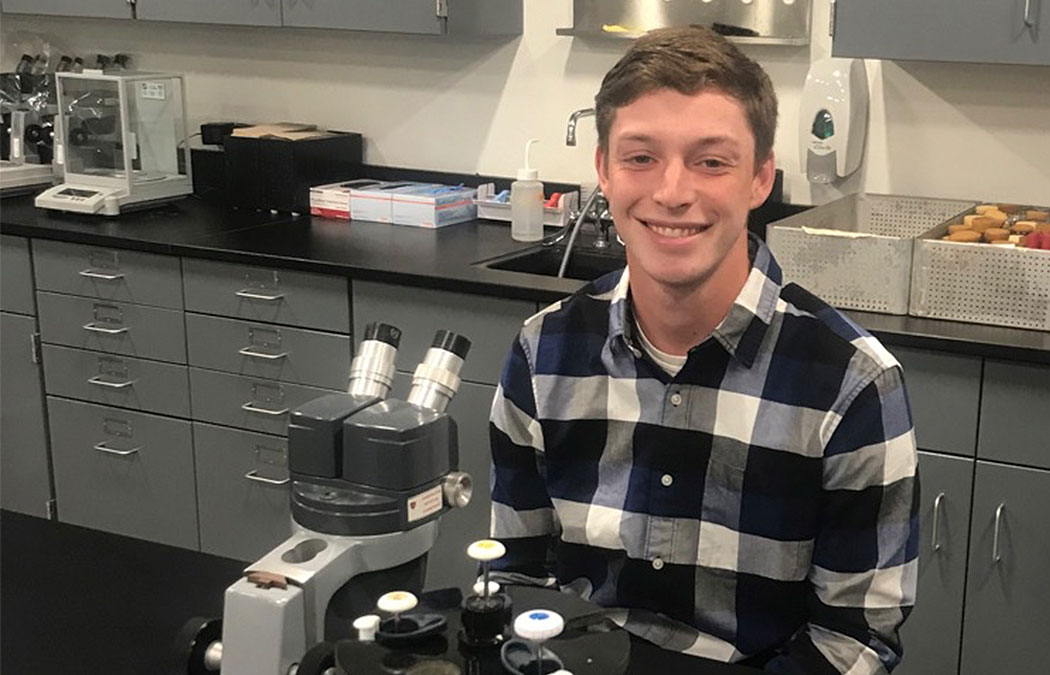
Student ‘miles ahead of his peers’ after research experience with Mayo Clinic Health System
By Tom Brandes
Who knew that when Brandon Merfeld tore his ulnar collateral ligament in high school, the result would be a positive, life-changing experience? Merfeld, now a sophomore majoring in Biology at Saint Mary’s University, discovered his calling in life.
“I went to an orthopedic surgeon and thought he’d recommend Tommy John surgery, but instead I avoided surgery with three months rest,” said Merfeld. “I was very impressed with the surgeon and realized my ideal job would be to work in sports medicine and be a physician for a college team.”
Merfeld grew up in La Crosse, Wis., so when it was time to choose a college, he knew about the university’s beautiful Winona campus, strong science program with great facilities, and beneficial relationship with Mayo Clinic. But when the school’s baseball coach, Nick Winecke, reached out and encouraged him to attend Saint Mary’s, it might have sealed the deal. Today, Merfeld is both an outfielder on the baseball team and an experienced sports medicine researcher.
“About two years ago a friend who is a pre-med major at Georgetown University was working with Andrew Jagim, Ph.D., the director of Sports Medicine Research for Mayo Clinic Health System in La Crosse,” Merfeld said. “I visited the lab and learned what they did there. I was intrigued by the thought of doing research in sports medicine and offered to help in an informal role.”
Dr. Jagim was impressed with Merfeld’s eagerness to learn and willingness to help as an unpaid volunteer in order to gain experience and bolster his résumé. Together they collaborated on a project studying daily physical activity and sleep based on firefighters’ shift-schedules.
“He helped with various tasks including data management and putting together an abstract summarizing our research findings, which identified differences in daily physical activity and sleep based on shift schedules in fire fighters for a regional sports medicine conference,” Dr. Jagim said.
Merfeld’s work involved consolidating data gathered from fitness watches that tracked sleep time, the daily number of steps and total daily calorie expenditure. He also analyzed the differences between when the fire fighters were working and not working. After presenting the abstract, he moved on to help with the full manuscript with the intent to submit the article for publication this summer.
Merfeld wrote and revised multiple abstract drafts, sending them to Dr. Jagim who marked up and returned them. Although at times the process was grueling, Merfeld gained much valuable experience.
“I sent Dr. Jagim the first drafts, and I felt they were bad because he had so many changes, but he reassured me that it was O.K.,” says Merfeld. “I’ve learned so much from him. It’s valuable working with someone like Dr. Jagim who has excelled in his field. He understands undergrads are busy. I wanted to help his research and not be a burden.”
Ultimately the abstract was submitted and accepted for presentation as a poster at the American College of Sports Medicine’s Northland Regional Spring Meeting, which was held virtually in April. Merfeld worked with Dr. Jagim to create the poster, recorded his 8-minute presentation on his phone in a student lounge, and uploaded it via Zoom.
Dr. Jagim notes Merfeld successfully demonstrated the traits of a good researcher, including being organized and responsible, and having good time management skills. Merfeld meticulously mapped the process and addressed issues on the fly as they came up.
“I reassured Brandon that it takes time and patience to develop scientific writing skills, but Brandon is already miles ahead of his peers by being exposed to this now and it will certainly help him with his future plans of medical school,” said Dr. Jagim. “It’s pretty rare to see students get involved with research until their senior year of college or even at the grad level. Getting this experience says a lot about the type of student Brandon is, and he’s still hungry for more ways to get involved.”
In fact, Merfeld is currently working on a similar research project involving Division III athletes, looking at the effect of early morning workouts on sleep. Spoiler alert: coaches might want to let their players sleep in.
“Dr. Jagim mentored me through this process. I can’t express how much he’s helped and taught me about research,” Merfeld said. “I’ve been working with different groups in my labs and try to pass along to them information that I’ve learned.”
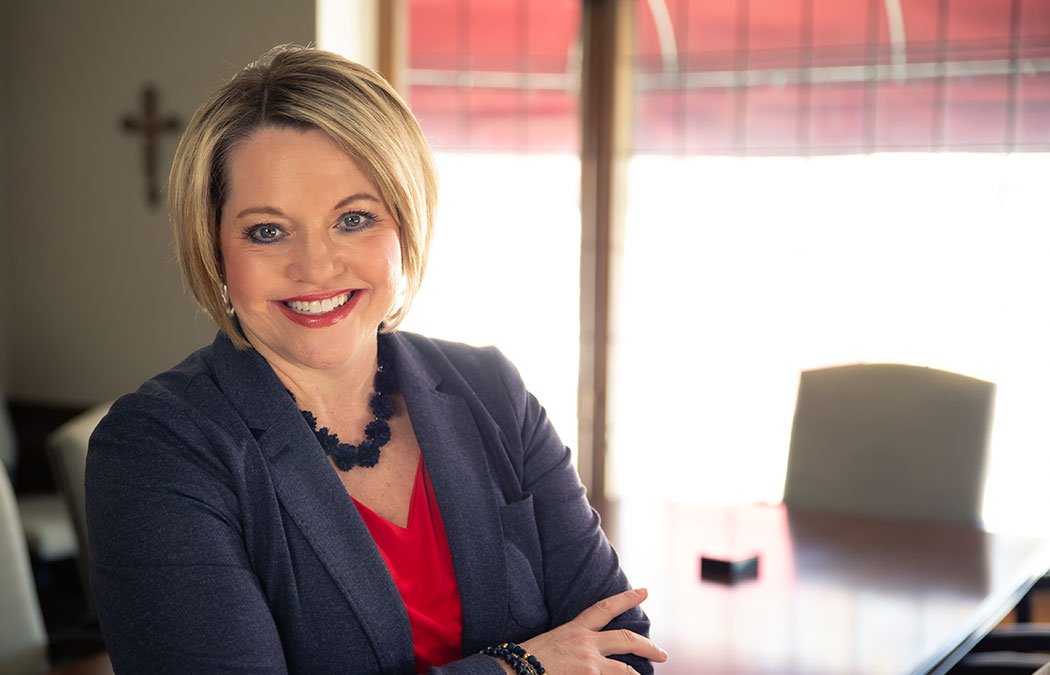
Women and men: Together for change
When Michelle Wieser, Ph.D., became dean of the School of Business and Technology at Saint Mary’s in 2019, she brought with her a vision for opening new pathways to degree completion for a new generation of students. Many of these innovations are designed to appeal to underrepresented groups in business and technology, including women.
Statistics show that women in the United States have made slow progress toward gender parity in the workplace. According to McKinsey & Company’s 2020 Women in the Workplace report, between January 2015 and January 2020, the percentage of women in senior vice president positions increased from 23 to 28 percent, and women in executive-level positions increased from 17 to 21 percent. On average, Minnesota women were more successful. The 2019 Minnesota Census of Women in Corporate Leadership showed that women held nearly 23 percent of executive-level positions in the 76 largest publicly traded companies headquartered in Minnesota.
These findings and the fact that the pay gap between men and women also had been gradually narrowing is good news. This is pre-pandemic though. McKinsey & Company predicts “the progress we’ve seen over the past six years could be erased.” On Nov. 6, 2020, the Washington Post reported that the percentage of women in the U.S. labor force was equivalent to what it was in 1988.
The pandemic has a two-pronged effect on working women: Many of the eliminated jobs are low-paying service sector ones traditionally held by women, particularly women of color. Another issue is a lack of childcare and online school, forcing working mothers to juggle even more responsibilities than they usually do. Many have chosen to stay home. In September 2020 alone, 865,000 women dropped out of the workforce.
Involving men in gender diversity matters
Dean Wieser and others are addressing these matters by engaging men. In January 2020 Wieser joined the pilot group for Menttium’s new program, Women Mentoring Men: Standing Together for Change. Menttium is a woman-owned business specializing in mentoring programs. Women Mentoring Men activates men as advocates for gender parity. An expert in gender equality in the workplace, Wieser jumped at the opportunity to get involved.
The pilot group of 10 included senior leaders with the power to create change within their companies. Mentors and mentees met one-on-one and in group sessions with structured discussion topics and deliverables.
Wieser’s mentee was Rob Grubka, president, employee benefits, at Voya Financial. He was searching for insight into gender imbalances on one of Voya’s teams, which includes sales reps, most of whom are men, and client service employees, most of whom are women. Most women weren’t interested in the hours or travel that was typical on the sales side, raising questions for Grubka, such as “How do we change the job to make it more inclusive? What does the job really need to be?”
Allies and advocates
Naturally, participants discussed how women are being affected by the pandemic. Mothers often carry more of the parenting load. They have more difficulty juggling the demands of work and parenting children who are no longer in school or daycare.
The already negative impact on the careers of mothers has disproportionately affected Black women, and women who are senior leaders. McKinsey & Company reports that women are worried about being negatively judged because of their caregiving responsibilities, and they are uncomfortable sharing their challenges with colleagues. This makes conversations like the ones that took place between mentors and mentees more important than ever.
From conversation to change
Menttium designed the program to have depth and to produce change, but the outcome was better than anyone expected. Wieser’s mentee Grubka reports that he has material to share with Voya’s leadership team and that he is prepared to elevate the conversation on how to deliberately create an environment that values diversity.
The mentors reported that they got a lot out of the program too. “Because of the level of individual and group interaction in this program, we couldn’t run from tough conversations,” Wieser said. “That made all the difference for me. I have always been deeply passionate about gender equality in the workplace, but this program helped me view all of this through a race and ethnicity lens, too.”
Wieser will use what she has gained from the program in her next research project. Her Ph.D. dissertation was a major study on the impact of an MBA on women’s careers, conducted for Forté, a nonprofit dedicated to women’s career development. Comparing both extrinsic and intrinsic factors, Wieser found that men outpaced women in most factors, particularly in extrinsic areas. Her next study will consider how race and gender affect the experience of MBA students, from the application process through career success after graduation.
If workplaces are to achieve gender parity, it is important for men to be involved. In order to do that, we need safe spaces for courageous conversations about bias and privilege. When women mentor men, men have the opportunity to gain a different perspective and build skills for advocacy and allyship. If there was ever a time when women and men need to work together for change, it’s now.
To learn more, visit menttium.com/services/women-mentoring-men.
Find the results of Wieser’s dissertation research by searching for “Women, Men, and the MBA: A Quantitative Assessment of the Impact of the MBA Degree on the Extrinsic and Intrinsic Career Outcomes of Graduates.”
